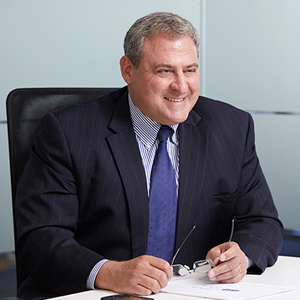… as climate, COVID prompt increased demand
With rising insurance premiums and continued fears about the impact of climate change – and whether the world is reacting effectively enough – insurance-linked securities and catastrophe bonds are going through a growth spurt.
The March market slump due to COVID-19, which weighed heavily on returns for the first quarter, enabled the asset class to show its mettle as an uncorrelated investment likely to outperform in down markets.
An established global catastrophe (‘cat’) bond manager, Twelve Capital, appointed a representative to distribute its offering for Australia and New Zealand in late 2019, Sydney-based Allen Partners. The firm has been supported by research notes for the Australasian market from two big asset consultants, Mercer in August and Frontier Advisors just last week (see separate report this edition).
Tom Pascarella of Allen Partners, the consultant to Twelve Capital for the region, said last week (October 26) that cat bonds were starting to be considered as a “social good”, helping climate resilience through providing capital to reinsurance capacity. Lately insurance premiums have been rising and the number and value of insurance policies, in which the cat bond investors share.
“The focus of renewables is in part to reduce the severity of weather events. In many areas the insured risk is going up alongside the increased value of homes and property in the built environment around the world,” he said. This is particularly so for the world’s hot spot around the regions bordering the US North Atlantic and the Gulf of Mexico, which are prone to regular cyclones.
Twelve Capital has introduced its UCITs fund to the Australasian market via Allen Partners, as an option alongside mandates for investors. This has weekly liquidity and daily pricing and allows the manager to provide more disclosure for the granularity of the portfolio. In the past few months, Twelve Capital has seen a 30 per cent inflow from investors in its UCITs fund to about US$800 million. Overall FUM in the strategies, including mandates is more than US$1.7 billion. “We saw performance this year bounce back after March, with a year-to-date return of 4.6 per cent in US dollars,” Pascarella said. “It’s been strong since April. People have been running the correlations with other asset classes and the fact that cat bonds are lowly correlated is a big factor in their decision to invest.” (The weather risk is fully uncorrelated but the bonds can momentarily show minor correlation due to bid-offer changes.)
Cat bonds and other insurance-linked securities (ILS) investing are not new things. Pascarella estimates that at least 15 of the 50-or-so largest fiduciary investors in Australia and NZ have some form of exposure to the asset class, including MLC, the Future Fund, and NZ Super, which recently completed a major review of its strategy to do with climate change.
Twelve capital looks to further reduce volatility of performance by adopting a broad-based portfolio of up to 120 securities, which is almost half the market’s universe. “Cat bond documentation is becoming more standard, but the risks lie in the quite specific perils, cedants (issuers of the bonds) and triggers,” Pascarella said. “There’s a growing sophistication of mid-tier and smaller institutional investors in this market and a greater imperative for true diversification for all investors.”
Mercer says that the 18-year average gross return from cat bonds is 7.6 per cent, compared with 6.9 per cent for US high-yield securities. With an average expected loss rate of 2.7 per cent after insurance payouts, the average return to investors before fees is about 5 per cent.
The Mercer research note says: “We believe natural-catastrophe-focused strategies for investing in insurance-linked securities (ILS) present a compelling opportunity in the current environment… In recent years, the declining trend in reinsurance premiums has reversed following losses from hurricanes and other events in 2017 through 2019. Premiums have also increased helped by rising demand for reinsurance and reduced capital in the reinsurance sector.
“Indeed, after a few years of challenged performance, ILS managers tell us they have seen significant premium increases at the June 1, 2020, renewals. Some are calling this a return to a “hard market,” typified by stricter terms and conditions that benefit investors. As a result, most ILS managers see the outlook for the asset class as better now than it has been in many years.”
– G.B.










